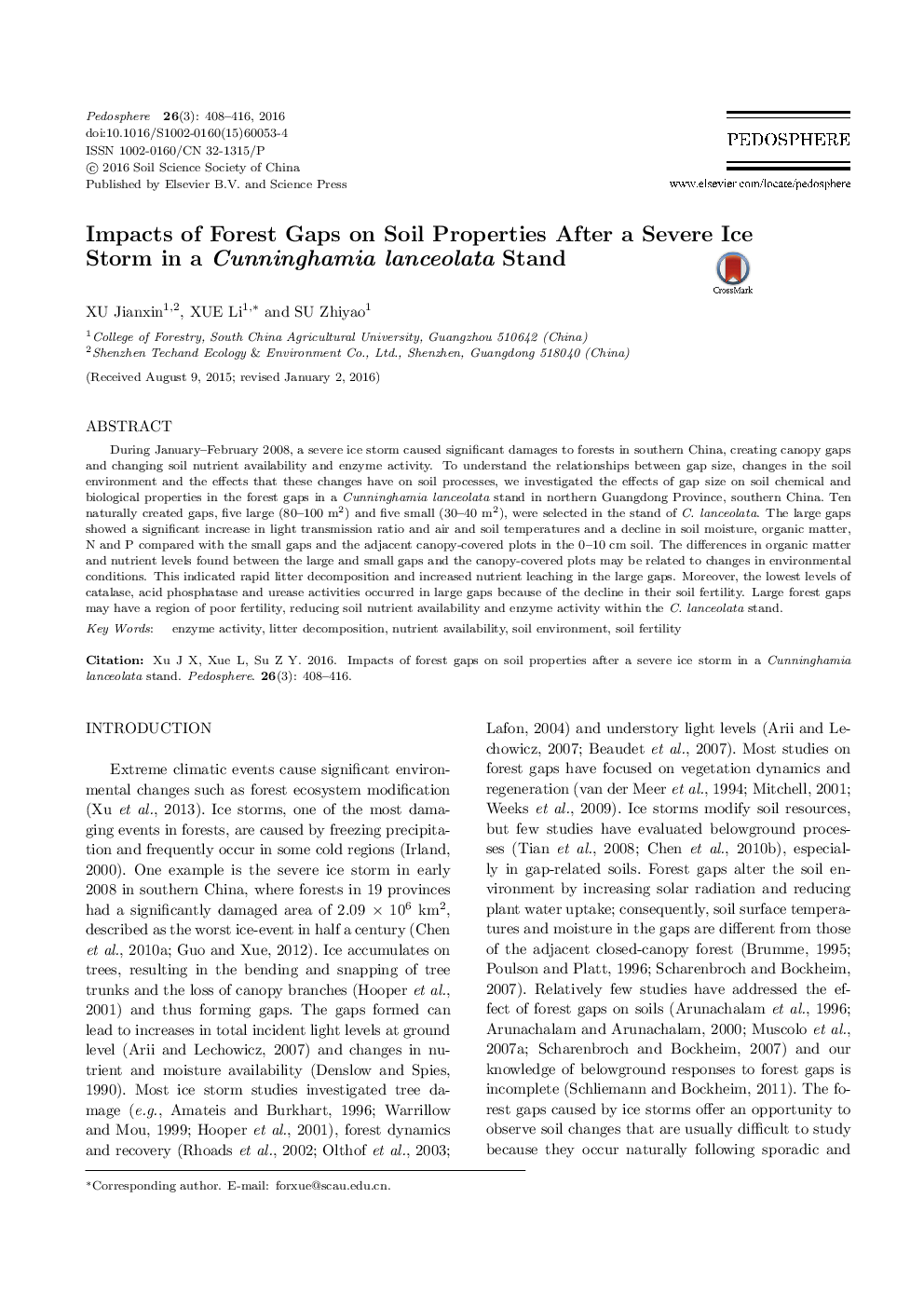| Article ID | Journal | Published Year | Pages | File Type |
|---|---|---|---|---|
| 4581150 | Pedosphere | 2016 | 9 Pages |
During January–February 2008, a severe ice storm caused significant damages to forests in southern China, creating canopy gaps and changing soil nutrient availability and enzyme activity. To understand the relationships between gap size, changes in the soil environment and the effects that these changes have on soil processes, we investigated the effects of gap size on soil chemical and biological properties in the forest gaps in a Cunninghamia lanceolata stand in northern Guangdong Province, southern China. Ten naturally created gaps, five large (80–100 m2) and five small (30–40 m2), were selected in the stand of C. lanceolata. The large gaps showed a significant increase in light transmission ratio and air and soil temperatures and a decline in soil moisture, organic matter, N and P compared with the small gaps and the adjacent canopy-covered plots in the 0–10 cm soil. The differences in organic matter and nutrient levels found between the large and small gaps and the canopy-covered plots may be related to changes in environmental conditions. This indicated rapid litter decomposition and increased nutrient leaching in the large gaps. Moreover, the lowest levels of catalase, acid phosphatase and urease activities occurred in large gaps because of the decline in their soil fertility. Large forest gaps may have a region of poor fertility, reducing soil nutrient availability and enzyme activity within the C. lanceolata stand.
